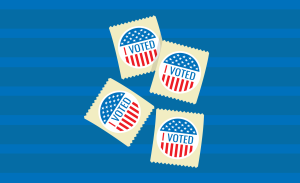Last Tuesday, the whole nation was in frenzy with Election Day fever, yet up in the nation’s capital, the Supreme Court went on as usual, beginning proceedings on a case that has brought much controversy within the gaming community. Schwarzenegger v. Entertainment Merchants Association (EMA) challenges a California law created by California State Senator Leland Yee in 2005 to ban the sale of violent video games to anyone under the age of 18 and require additional clear labeling beyond the existing Entertainment Software Rating Board’s (ESRB) rating system.
The new law defined “violent video game” using a variation of the Miller test (a three pronged test used previously by the Supreme Court to determine when speech is not protected under the First Amendment) and required up to a maximum of $1,000 in fines from retailers for each infraction. It regulated games that were closer to pornography than video game and prohibited the sale or rental of games that gave players under 18 the option of “killing, maiming, dismembering, or sexually assaulting an image of a human being.” Former Governor Schwarzenegger signed the law in October 2005, and it would have gone into effect in January 2006. In response to the law, the EMA and the Entertainment Software Association (ESA) filed a case against the law in the U.S. District Court for the Northern District of California and was granted an injunction in December 2005 to block the enforcement of the law during this case. The law was declared unconstitutional in 2009 by the 9th U.S. Circuit Court of Appeals in San Francisco.
Most supporters of the law believe it will protect children from buying violent games, but gamers and free speech advocates worry that California’s ban could lead to strict federal regulation on the content of games and other media.
Opponents of the ban have also called the measure unnecessary since virtually all major game publishers and retailers employ a universal voluntary rating system, assigning one of eight age-specific ratings to games and blocking the sale of games rated M for “mature” and AO for “adult only” to children.
Casey Barker ’14 has seen firsthand the current effectiveness of the gaming system. “I have had ID checked many times, and I have seen a kid forced to put a game back because he did not have a parent there to grant permission for the purchase of a game.” She, like many others, believes that the law would “open up the ability for people to call the court to censor other forms of important media” and that “the government-approved censorship of these [games] would truly be a tragedy and an awful omen of things to come regarding censorship in America.” In the end, the issue boils down to one question: does a state law restricting the sale of violent video games to minors violate the First Amendment right to free speech? Many people, from parents and free speech advocates to gamers of all ages, will be playing close attention to this case, which will not be ruled until July 2011.












Be First to Comment